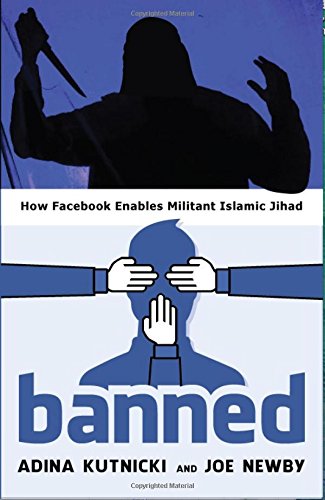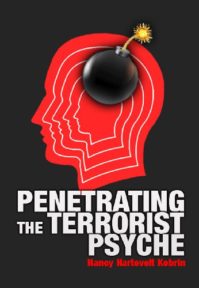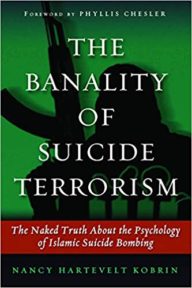
Muslims in Paris: “Death to the Jews! Death to the Jews!”
In the wake of the slaughter of four Jews in a Paris kosher supermarket by an Islamic jihadist, a Parisian Jew said: “In the past year, 7,000 Jews have already left France and after this there will be many thousands more. We are not safe in France any more. There is no future for Jews here in France. We are finished in France.”Now they even see it in the comfortable leftist offices of Vanity Fair. What is happening in France and all of Europe is obvious to everyone — except the political elites.
“The Troubling Question in the French Jewish Community: Is It Time to Leave?,” by Marie Brenner, Vanity Fair, August 2015:
‘How can anyone be allowed to paint a swastika on the statue of Marianne, the goddess of French liberty, in the very center of the Place de la République?”
That was what the chairman of one of France’s most celebrated luxury brands was thinking last July, when a tall man in a black shirt and a kaffiyeh leapt to the ledge of Marianne’s pedestal and scrawled a black swastika. All around him, thousands of angry demonstrators were swarming the square with fake rockets, Palestinian and Hamas flags, even the black-and-white banners of ISIS. Here, barely a mile and a half from the Galeries Lafayette, the heart of bourgeois Paris, the chants: “MORT AUX JUIFS! MORT AUX JUIFS!” Death to the Jews. It was Saturday, July 26, 2014, and a pro-Palestinian demonstration turned into a day of terror in one of the most fashionable neighborhoods of the city.
“Do something! Do you see what is happening here?” the chairman said to a line of police officers watching the demonstration build to a frenzy. “What do you expect us to do?” one officer said, then looked away. For years, the chairman, a longtime anti-racism activist, has turned up at rallies like this one to see which politicians and which radical groups were present. (For reasons of personal safety, the chairman asked not to be identified for this story.) France’s endless demonstrations are a mainstay of the republic, a sacred right rooted in the legacy of Voltaire. But hate speech is a criminal offense—people may express their opinions, but not to the extent of insulting others based on their race, religion, or sex. The protest—against Israel’s Gaza policies—had been banned by the government, fearful of violence, following flare-ups in the preceding weeks. But if the police were to move in too quickly, the riots might continue all summer long—suburbs in flames, mobs in central Paris.
Photographs and videos of the swastika and its perpetrator, of protesters chanting “Kill the Jews,” and of the Palestinian, Hamas, and ISIS flags were sent in a rush to various groups in the Jewish community who assess threats. By early afternoon, some of these reached Sammy Ghozlan, a 72-year-old retired police commissioner who has spent his career working the banlieues, the belt of working-class, racially mixed suburbs that surround Paris. Ghozlan is a folk hero of the banlieues and has a nickname that is impossible to forget: le poulet cacher—“the kosher chicken.” (Poulet is slang for cop.) For 15 years, he has overseen France’s National Bureau for Vigilance Against Anti-Semitism—known by its French abbreviation, B.N.V.C.A.—a community hotline he founded that is funded by his police pension and whatever small donations he can come by. Its purpose is nothing less than to protect the Jews of France.
This past year, Ghozlan’s frequent bulletins—detailing attacks in parks, schools attacked, synagogues torched, assaults on the Métro—have clogged the in-boxes of reporters at Le Monde, Le Figaro, and Le Parisien, and of thousands of Jews throughout the banlieues. Ghozlan’s bulletins sometimes come twice a day, with claims that have also been backed up by hard numbers: according to a watchdog group, the Jewish Community Protection Service, or S.P.C.J., which reports statistics collected by the country’s Interior Ministry, there were 851 recorded anti-Semitic incidents in France in 2014, more than doubling the total from 2013. Ghozlan and his 19 volunteers are on the front lines in the most troubled areas, documenting, trying to confirm, hoping to get a reporter or a police prefect or a court to take action. There has been such an uptick, and such a flurry of alerts from Ghozlan over the past year, that there’s always a risk that his efforts will be shrugged off as yet another nuisance.
Just two weeks before the July 26 riot, Ghozlan’s texts and messages did not stop. It was Bastille Day weekend, and, on Sunday, July 13, he tracked the hundreds of protesters who rushed into the Marais, Paris’s historic Jewish quarter, stopping briefly at an empty synagogue on the Rue des Tournelles, near the Place des Vosges, and then racing, reportedly with iron bars, axes, and flags, toward the Rue de la Roquette, a boutique-and-café-lined street a few blocks from the apartment of Prime Minister Manuel Valls. Their destination was the Don Isaac Abravanel synagogue. Inside, the 200 worshippers—including the chief rabbi of Paris—heard the howls from the crowd, estimated to number about 300: “Hitler was right!” “Jews, get out of France!” Audrey Zenouda, a policewoman who happened to be inside the synagogue, called her father, a retired policeman who works with Ghozlan at the B.N.V.C.A. “Do something. We are terrified here.”
“I knew that if anyone could get the police to take action it would be Sammy and the B.N.V.C.A.,” Zenouda later told me. Only six police officers were assigned to be on demonstration duty that day. “We are waiting for the assault police to arrive,” one told a reporter at the scene. After an hour, a counterterrorism force rescued the chief rabbi, but everyone else was left inside, behind doors barricaded from the inside with chairs and tables. Outside, members of a special security patrol and a dozen members of the self-trained Ligue de Défense Juive began chasing off the demonstrators with chairs and tables from nearby cafés, working with a small unit from the security force. Together, it took them three hours to disperse the crowd and safely evacuate the synagogue.
Almost immediately afterward, the reports of the July 13 demonstration would be challenged and debated. The numbers would be skeptically parsed—were there really so many?—and questions would be asked about actions that might have provoked the violence, as if carrying iron bars and axes around central Paris might be normal. In some circles, there were even accusations that the Jews “brought on the behavior,” as they always do.
In the crowd—and many others that would turn the summer of 2014 into a summer of hate in Paris—were representatives of France’s political parties, both left and right. France’s Muslim population is estimated to be around 5 million, a potential voting bloc in a country of 66 million. (The Jewish population of France is in the neighborhood of 500,000.) Shimon Samuels, the director for international relations at the Simon Wiesenthal Center in Paris—which combats anti-Semitism, Holocaust denial, and extremism, and, through a foundation, helps to fund Ghozlan’s hotline—witnessed some of the events of July 13. Among those he recognized in the crowd were a local concierge and bank teller, along with members of the current Socialist government.
Monitoring the footage later, Ghozlan was sickened to see the faces of political allies he had worked with for decades, mostly in what is known as Le Neuf Trois (“9–3”), the area of northern Paris suburbs that he once presided over as a commissioner of police. Le Neuf Trois is the rap name for this district, which has the honor of being, by reputation anyway, the most violent in France. (The name derives from the area’s postal codes, which all begin with “93.”) It is also where Ghozlan lived for 30 years in a spacious house surrounded by hedges on the Avenue Henri Barbusse in the relatively calm community of Le Blanc-Mesnil.
For Ghozlan, July 2014 was the tipping point, after years of escalating anti-Semitic violence: “There was no debate in our family. We all knew—it is time to go. Leaving is better than running away,” Ghozlan later told me. He would ultimately come to think of the summer riots as the predictors of the catastrophes that would play out six months later in the terror attacks at the offices of the satirical weekly Charlie Hebdo, three quarters of a mile from the Place de la République, on January 7, 2015, and then, two days later, at Hyper Cacher, a kosher grocery store in the Porte de Vincennes neighborhood of eastern Paris.
By then Ghozlan’s classified ad—one nobody who knows him could ever have thought possible—had already been posted: “Renting a house, 4 rooms, 2 bathrooms, a veranda, a garden with 50 m. square.” Two days before the Charlie Hebdo attack, Sammy announced what, to many, including me, was unthinkable: Sammy Ghozlan, proud Frenchman and the dean of Paris’s anti-Semitic crime-fighters, had joined the thousands of French Jews moving to Israel….
Read the rest here.







